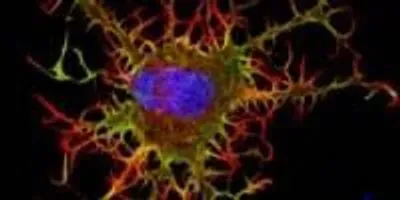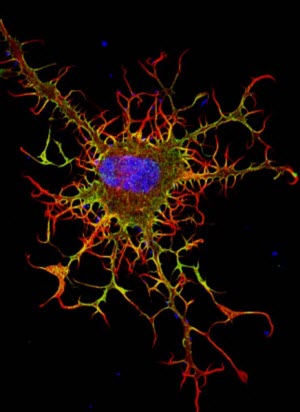As Halloween approaches, the folks at NIH's National Institute of General Medical Sciences turned up some spectral images from their image gallery. They highlight some spooky-sounding—but really important—biological topics that researchers are actively investigating to spur advances in medicine. Here's one example.
Cell Skeleton












